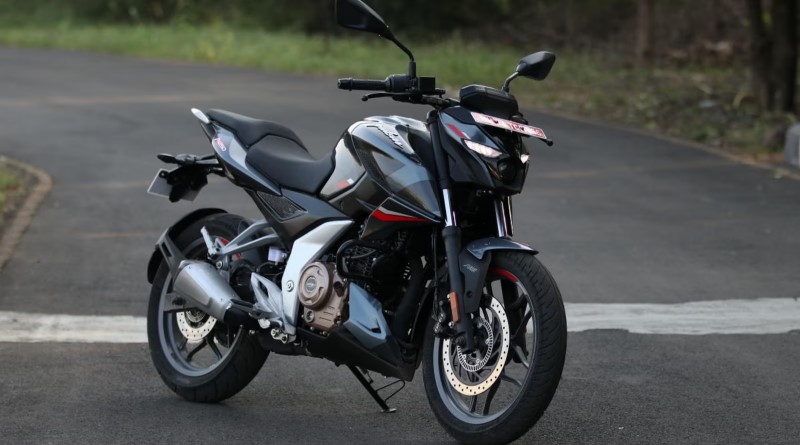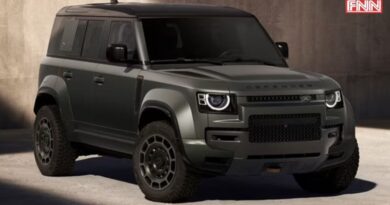2024 Bajaj Pulsar N250: More Enhanced than before

New Delhi: Two years have elapsed since the debut of Bajaj’s N250 and F250, envisioned as successors to the classic Pulsar 220F. While the N250 showcased commendable capabilities, it failed to garner the same acclaim as its predecessor 220F, evident in its sales figures. Responding to market feedback, Bajaj undertook a thorough revamp of the N250.
Visually, the N250 retains its core design, albeit with subtle refinements discernible only to ardent “Pulsar maniacs.” The significant upgrade lies in the inclusion of a USD fork, exuding an opulent champagne gold finish in select variants. Introducing two fresh paint options—crimson and ivory—Bajaj replaces the erstwhile copper hue on the engine covers with a sophisticated gunmetal tint.

Another pivotal alteration involves swapping the analog display for a fully digital LCD unit, akin to the Pulsar N150 & N160. Embracing features such as Bluetooth connectivity and turn-by-turn navigation, this interface also facilitates toggling through various ABS modes and settings. However, concerns arise regarding its subdued brightness, impeding legibility on sunny days. Further, the unit’s single-button interface warrants acclimatization, diminishing user experience.
While the N250 retains its original aesthetics, its core ethos revolves around offering a harmonious blend of power, agility, and comfort. Tailored for urban commuting and occasional spirited rides, the N250 exhibits nimbleness amidst city traffic, with adept maneuverability. Despite exhibiting slight rigidity at the front, its suspension adeptly navigates undulating terrains. An increased tire width contributes to its visual appeal, accentuating its robust stance.
Powertrain specifications remain unaltered, with the 249cc single-cylinder engine delivering 24.1hp and 21.5Nm of torque. Smooth gear shifts and a responsive clutch enhance its usability, albeit without a sixth gear. Performance nuances notwithstanding, the N250 lacks the theatricality and engagement characteristic of a sporty 250cc motorcycle.
Braking capabilities, while adequate, fall short of expectations for a performance-oriented machine. However, Bajaj’s introduction of switchable traction control—a first in the 250cc segment—augments safety. Additionally, the dual-channel ABS system, now switchable across Road, Rain, and Offroad modes, fortifies its prowess.
In essence, the revamped N250 epitomizes value proposition, albeit with minor ergonomic drawbacks. Despite reservations regarding the LCD display’s functionality, the incremental enhancements justify the nominal price hike, solidifying its position as a frontrunner in the 250cc segment.





I just couldn’t depart your web site prior to suggesting that I really enjoyed the standard information a person provide for your visitors? Is gonna be back often in order to check up on new posts
fantastic publish, very informative. I ponder why the opposite specialists of this sector do not understand this. You must continue your writing. I’m confident, you have a great readers’ base already!
Hey there just wanted to give you a quick heads up. The text in your article seem to be running off the screen in Chrome. I’m not sure if this is a formatting issue or something to do with browser compatibility but I figured I’d post to let you know. The design look great though! Hope you get the problem resolved soon. Kudos
I’ve been surfing online more than 3 hours lately, but I never discovered any attention-grabbing article like yours. It is lovely value enough for me. In my opinion, if all website owners and bloggers made just right content as you probably did, the net will probably be much more useful than ever before.
Thank you for the good writeup. It in fact was a amusement account it. Look advanced to more added agreeable from you! However, how can we communicate?
Please let me know if you’re looking for a article writer for your blog. You have some really good articles and I think I would be a good asset. If you ever want to take some of the load off, I’d love to write some material for your blog in exchange for a link back to mine. Please send me an email if interested. Kudos!
It is truly a nice and useful piece of info. I am satisfied that you shared this helpful information with us. Please keep us up to date like this. Thank you for sharing.
Thanks for the sensible critique. Me and my neighbor were just preparing to do a little research about this. We got a grab a book from our area library but I think I learned more from this post. I’m very glad to see such magnificent information being shared freely out there.
Hi, Neat post. There is an issue together with your web site in web explorer, would test this… IE nonetheless is the market leader and a large component to other people will pass over your excellent writing because of this problem.
I’ve been browsing online more than three hours today, yet I never found any interesting article like yours. It’s pretty worth enough for me. In my opinion, if all web owners and bloggers made good content as you did, the web will be much more useful than ever before.